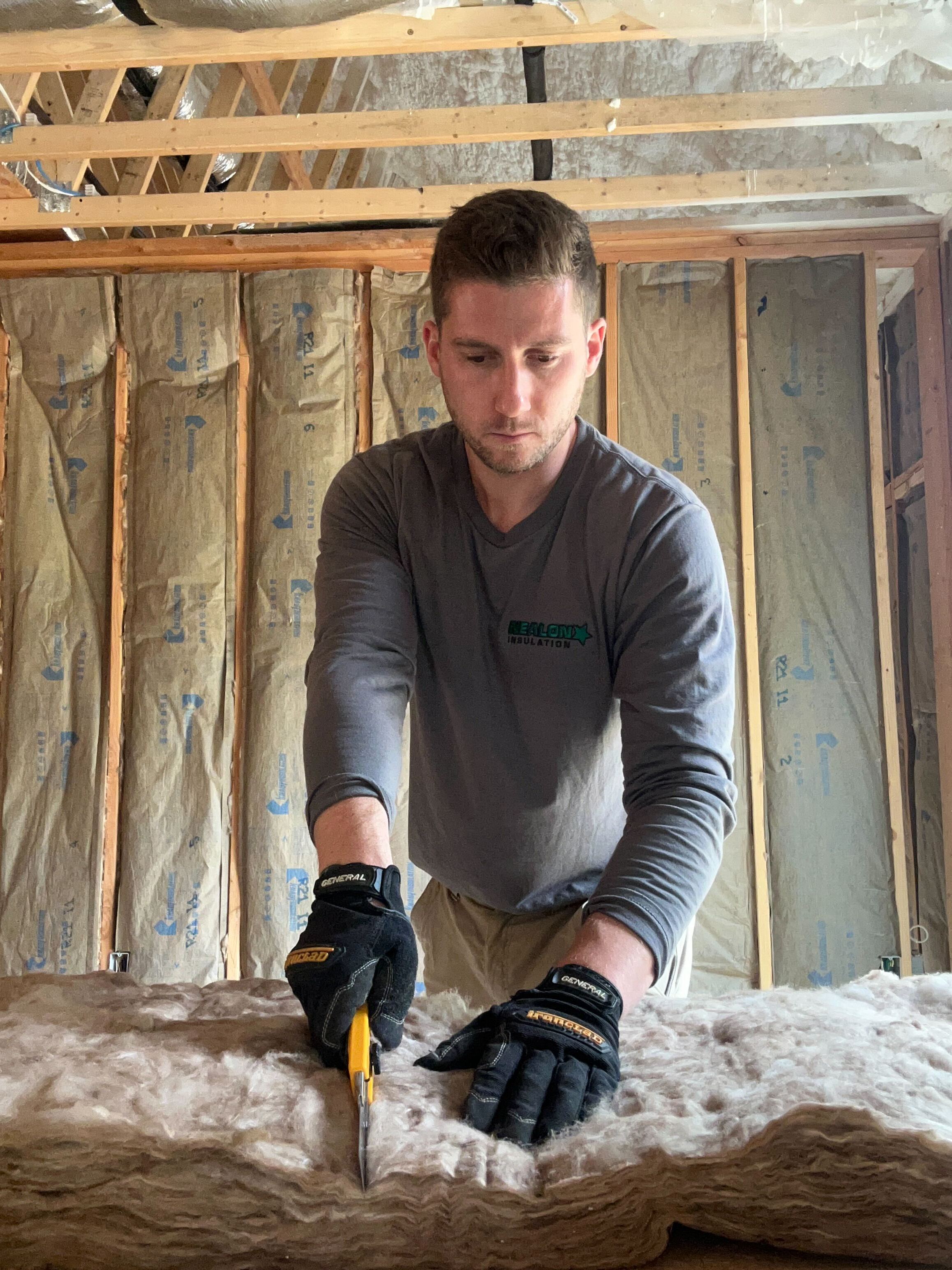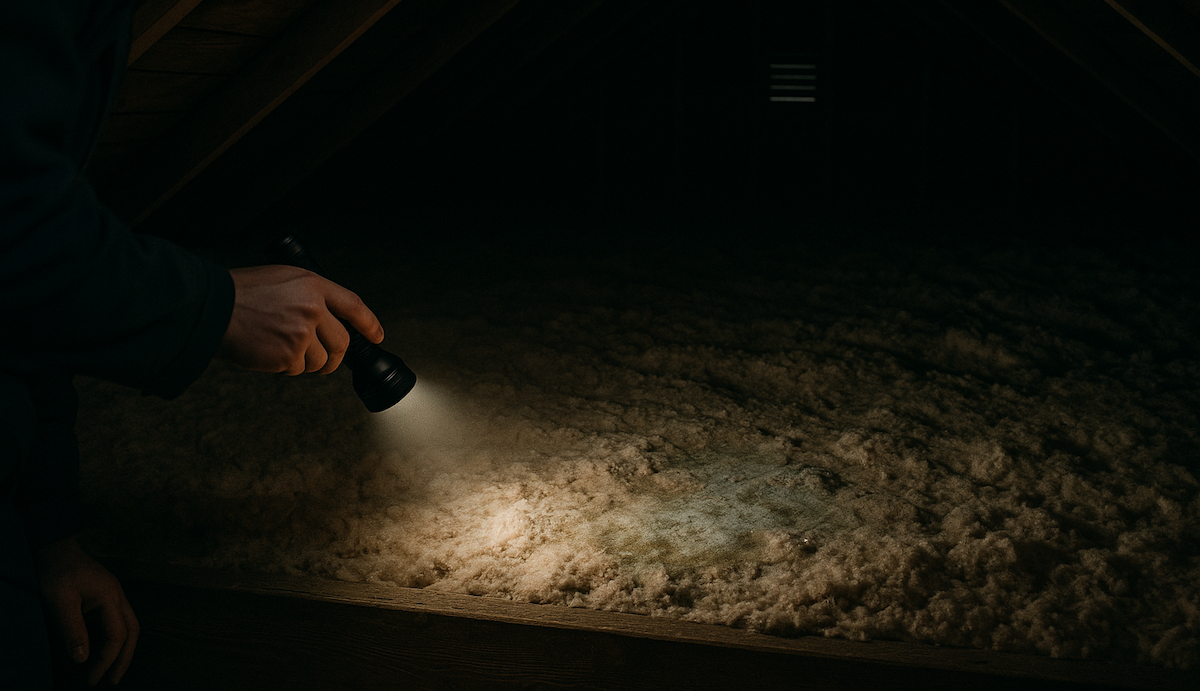How to Price an Insulation Job (Straight from the Contractor’s Notebook)

If you’ve ever gotten a quote for insulation work and thought, “Where is this number even coming from?” — you’re not alone.
We get it. Home improvement pricing can feel like a black box. So let’s open it up. This post breaks down how insulation pricing works — at least for us at Nealon Insulation — so you can make better-informed decisions about your home.
The Building Blocks of a Quote
Every insulation project has three core pricing components:
- Materials
- Labor
- Margin (which covers overhead as well as a modest profit for us… we gotta eat too!)
Let’s break each one down.
1. Materials: What You’re Putting in the Walls (or Attic or Basement)
First up: materials. This part’s pretty cut and dry.
Based on the size of the space and the type of insulation you need — fiberglass batts, spray foam, cellulose insulation, etc. — we estimate how much product is needed based on the square footage and necessary R-value which is essentially measured by thickness in inches.
We know the cost per bag, batt, or board foot (square foot by inch) of material. Multiply that by the quantity needed, and you’ve got your material cost!
Simple as that! It’s transparent and straightforward — no magic here…
But next come’s the trickier part…
2. Labor: Who’s Installing It, and How Long will It Take
This is where things start to vary a bit more.
We do our best estimate how many total hours it will take to complete the job, from setup to cleanup. Then we multiply that by the average hourly labor cost across our crew. Our goal is to be as efficient as possible with this to ensure that you don’t get overcharged and everyone comes out a winner.
But it’s important to note labor isn’t just the physical act of installing insulation. It includes things like:
- Driving to your property
- Setting up tools and safety gear
- Protecting your home’s surfaces
- Cleaning up so you’re not left with a mess
If your home is older, has tight crawlspaces, requires extra prep, or needs just a little bit more concentration and caution then of course the labor hours go up.
And on top of that in this line of work sometime’s we’re getting into spaces or walls where we don’t even know what we’re going to find until we’re in there so sometimes contingencies need to be built in.
3. Margin: Why the Final Price Isn’t Just Materials + Labor
Here’s the part most people don’t talk about — the markup…
After we calculate materials and labor, we add a target margin. This isn’t just profit for us. It also covers all the other costs of running a business:
- Insurance and licenses
- Vehicles and gas
- Payroll taxes
- Tools and equipment maintenance
- Office support
- Marketing and scheduling
- Training, safety, and more!
But I promise we’re not greedy! Our goal is for you, the customer, to get real value for the price. We don’t aim for crazy margins. We aim for healthy, sustainable ones — the kind that keep good, high quality people employed and happy to help you with your problems.
Why Some Quotes Are Lower (or Higher)
If you see a big discrepancy in pricing, it could be because:
- They’re cutting corners on material quality
- They’re underestimating labor time
- They’re not factoring in overhead (and may not be around next year)
- Or maybe they’re just a more efficient company
If a quote is higher, it could be due to a company’s inefficiencies, higher overhead, maybe just plain greed… or maybe they’re higher quality and doing things the right way.
Everything’s relative here so it’s hard to know, just make sure you’re working with someone you can trust and know what you’re paying for. We do have ideas on how to find the right insulation contractor.
Does It Cost More to Insulate an Attic vs. a Basement vs. Walls?
Short answer? Yep. Different parts of your home come with different challenges — and that affects both labor and sometimes material choices.
Here’s the breakdown:
Attics
Attics are often the most cost-effective to insulate.
They’re usually wide open, easy to access, and fast to blow insulation into — especially with cellulose. That means lower labor costs per square foot, even if you’re aiming for a higher R-value (like R49–R60).
That said, if your attic is tight, filled with old insulation that needs removing, or has tricky venting and baffle issues — costs will go up.
Walls
Walls are a whole different beast.
If they’re open (like during a renovation), batt insulation is straightforward. But retrofit wall insulation? That involves drilling, dense-packing, and sometimes fishing insulation behind wires and braces.
More effort = more time = more cost.
🧊 Basements & Crawlspaces
Basements and crawl spaces are the wild cards.
Low clearance? Dampness? Old stone foundations? All that slows things down. Sometimes we need to build out framing, deal with moisture barriers, or switch to spray foam to get proper air sealing.
It’s not always more expensive, but it’s usually more finicky, which affects both the labor and setup.
Bottom line:
Not all parts of your home cost the same to insulate — and that’s not us being inconsistent. It’s just different conditions needing different approaches. When we give you a quote, we’re factoring in the real-world challenges of each area so you don’t end up with surprises halfway through.
Common FAQ's about Insulation Pricing
How accurate are insulation quotes, and can the price change after the job starts?
Insulation quotes are typically accurate, but the price can change if hidden issues are discovered—like moisture damage or outdated wiring. Reputable contractors, like Nealon Insulation, will inform you before making changes, explaining the issue and any cost difference. Transparency and communication help avoid surprises during the project.
What happens if I already have insulation—do you remove it or work over it?
If your existing insulation is clean, dry, and intact, new insulation can often be added on top. If it’s damp, moldy, pest-infested, or compressed, it should be removed first. Nealon Insulation evaluates your current insulation during the quote and recommends the safest, most efficient approach for performance and cost.
Can I lower the quote by doing some prep work myself?
Yes, you can sometimes lower the quote by doing prep work like clearing access paths, moving stored items, or vacuuming dusty areas. These tasks save labor time. Ask during the consultation to confirm what’s helpful and what should be left to the pros for safety and efficiency.
Are there financing options or rebates to help cover the cost?
Yes, there are financing options and rebates available. EnergizeCT offers rebates for insulation upgrades in Connecticut, and federal tax credits may also apply. Many contractors, including us, help with the paperwork to make the process easier and ensure you receive the full benefit.
How long will the insulation job take from start to finish?
Most insulation jobs take 1–2 days from start to finish, depending on the size and scope. Attics are usually completed in a single day, while crawlspaces or wall retrofits may take longer. Your contractor should provide a clear schedule before starting—and stay on track.
Final Thoughts
Insulation isn’t glamorous, but it’s one of the best investments you can make in your home’s energy efficiency, comfort, and long-term health.
We believe in doing things right — pricing included. When you get a quote from us, it’s built through real time, effort, and deep thought to ensure we’re providing the highest quality work for the best value:
Materials + Labor + Margin = Total Price
It’s not rocket science. It’s just good business.
And when it’s done right, everybody wins.
Related Articles
Let's Work Together
Ready to transform your home into an energy-efficient haven? Schedule your free energy assessment today and experience the Nealon difference for yourself.



